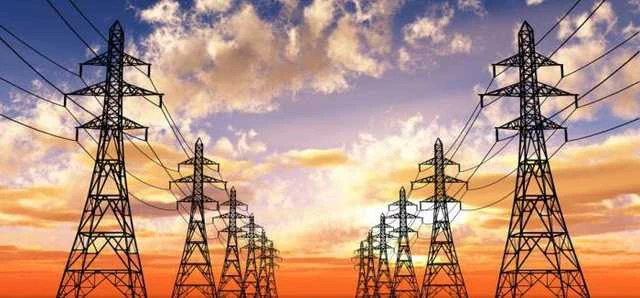
Russia changes its tactics of attacks on Ukrainian power plants
Instead of large-scale attacks, Moscow has focused on power plants in regions less protected than Kyiv
Russia has changed its tactics in attacking Ukraine's energy infrastructure, using precision-guided missiles to destroy power plants in areas less defended than Kyiv, some of which may not be fully restored until next winter, Financial Times reports.
Ukrainian officials have said that while the damage caused by Moscow is not as extensive, it is worse than in the winter of 2022-23, with the apparent goal now being permanent, irreparable damage.
Between 22 and 29 March, Russia struck seven thermal power plants — all in regions other than Kyiv, which has one of the best air defenses in the country. Russian missiles also hit two hydroelectric power plants.
Ukraine did not provide details on the extent of damage at each plant, but officials said some, including one in Kharkiv region near the Russian border, were almost completely destroyed.
"Our goal is to restore as much as we can by October," said Maxim Timchenko, CEO of DTEK, Ukraine's largest electricity producer. The group lost about 80 per cent of its electricity production in the Russian attacks in the last week of March. Five of DTEK's thermal power plants were forced to shut down.
According to Timchenko, there are plans to restore some substations and large power plants that were not completely destroyed. "Subject to no further attacks, at least 50 per cent of damaged power units will be reconnected to the grid"
If not for the warm weather, energy imports from the EU and increased renewable energy production, Ukraine could have experienced large-scale blackouts like those of 2022-23, Timchenko said.
During the previous winter campaign targeting Ukraine's power grid, Russia tried to plunge cities into darkness and cold by attacking power substations and transformers across the country, Timchenko said. But now, Russian missiles are targeting power plants in certain regions to "destroy them completely because it is not possible to rebuild power stations in a short time"
"The same number of missiles used in the [2022-23] winter attack are now being directed at five to six energy facilities in one region," said Maria Tsaturian, head of communications at Ukrenergo, Ukraine's national electricity transmission system operator.
“They are trying to cut off large industrial regions and cities from the power supply,” she said.
Smaller substations operated by Ukrenergo can be protected from attacks by means of defences. But it is "very difficult, if not impossible" to protect large power plants, which take “several months or even years” to restore, she said.
The second major difference from the winter of 2022-2023 is that Russia is now also using expensive, high-precision ballistic missiles, said Andriy Gerus, chairman of Ukraine's parliamentary committee on energy and utilities.
Gerus noted that a recent attack on a coal-fired power plant used $100 million worth of ballistic missiles, but Ukraine has only a few US Patriot air defence systems capable of shooting them down.
Russia is still using drones in large numbers, but as a cheaper way to target other parts of the power system, such as transformers, according to Andriy Chernyak, a Ukrainian military intelligence official.
"We expected the attacks at the beginning of the winter but we now see that the missiles they have used are freshly made," Chernyak said. He estimated that Russia has enough missiles for one or two more major attacks in the next few weeks.
Although the damage is said to be more permanent than in the winter of 2022-2023, it is more localised and its impact is temporarily mitigated by a combination of large electricity imports from the European Union, domestic solar power plants and warm weather, Gerus said.
He said that after the March strikes, imports from the EU reached a record 18,700 MWh, equivalent to the output of two power plants. In the months following Russia's full-scale invasion in 2022, Ukraine connected its power grid with neighbouring EU countries Romania, Slovakia, Hungary and Poland.
According to Gerus, the sunny days of early spring also contributed to this. The current warm weather means that at midday, solar power generates 20 to 25 per cent of the country's energy needs.
More renewable energy could help Ukraine even more in the long run. Wind and solar power plants are dispersed, making it impossible for strikes to take out power generation in the same way, Timchenko said.
- On March 22, Russia conducted the largest combined attack on the Ukrainian energy system since the beginning of the full-scale invasion. The invaders launched more than 60 drones and almost 90 missiles of various types into Ukraine. Ukraine's largest hydroelectric power plant, the Dnipro Hydroelectric Station, was among the targets. Oil products got into the river. Later, on March 25, Ihor Syrota, CEO of Ukrhydroenergo Power Company, stated that restoring the station would be a lengthy process due to the need to analyze debris in the engine room before assessing the full extent of the damage. According to the Ministry of the Environment, Russia's attack on Dnipro HPP caused UAH 140 million in damages to Ukraine's environment.
- On the night of March 29, Russia struck Ukraine’s energy sector again. The national energy company Ukrenergo reported that the Russian attack damaged thermal and hydroelectric power plants in the central and western regions of Ukraine. In particular, the energy infrastructure in Dnipropetrovsk, Vinnytsia, Ivano-Frankivsk, Lviv, Cherkasy and Chernivtsi regions was affected.
- Emergency shutdowns were introduced in the Dnipropetrovsk region and hourly shutdown schedules in the Kharkiv region.
- News













































